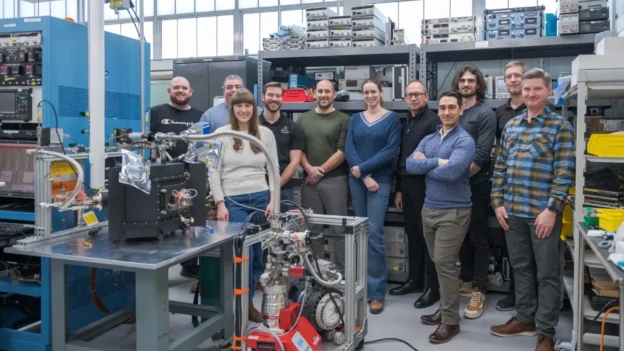With the goal of ensuring reliable and long-lasting power on future missions to remote regions of the solar system, NASA and the University of Leicester are testing a new radioisotope heat source fuel based on americium-241. Such an option could complement or even replace plutonium-238, which has been the primary energy source on spacecraft such as Voyager and the Perseverance rover.
Americium-241: a new heat source fuel
Over the past two decades, European researchers have evaluated the potential of americium-241 as an energy source for extreme environments. Its availability, especially in the UK, and its long half-life make it an attractive candidate. Through an agreement between NASA Glenn Research Center and the University of Leicester, tests were initiated with thermal simulators that replicate the behavior of this isotope in real conditions.
To convert heat into electricity, the team used free-piston Stirling converters. Unlike other engines, these require no rotating parts or bearings, minimizing mechanical wear. Such technology allows continuous power generation for decades, ideal for long-duration missions.
Simulators supplied by Leicester emulate the geometry and thermal performance of americium-241, using electric heaters. Simultaneously, Glenn’ s thermal conversion laboratory provided the Stirling hardware and testing infrastructure. A relevant aspect of the system is its ability to continue generating power even if a converter fails, which strengthens its reliability in remote scenarios.
The tests exceeded expectations in terms of both efficiency and operational stability. A new version of the system, with lower weight and better environmental adaptation, is currently under development. This technological evolution opens the door to new energy strategies for space exploration, reducing costs and increasing mission autonomy.
The synergy between the two institutions allowed progress to be made from a conceptual idea to a working prototype in record time. Leicester’s expertise in handling americium and the technical capabilities of NASA laid the groundwork for a partnership that could transform the power supply for future space expeditions.
Follow us on social networks and don’t miss any of our publications!
YouTube LinkedIn Facebook Instagram X (Twitter) TikTok
Source and photo: NASA

